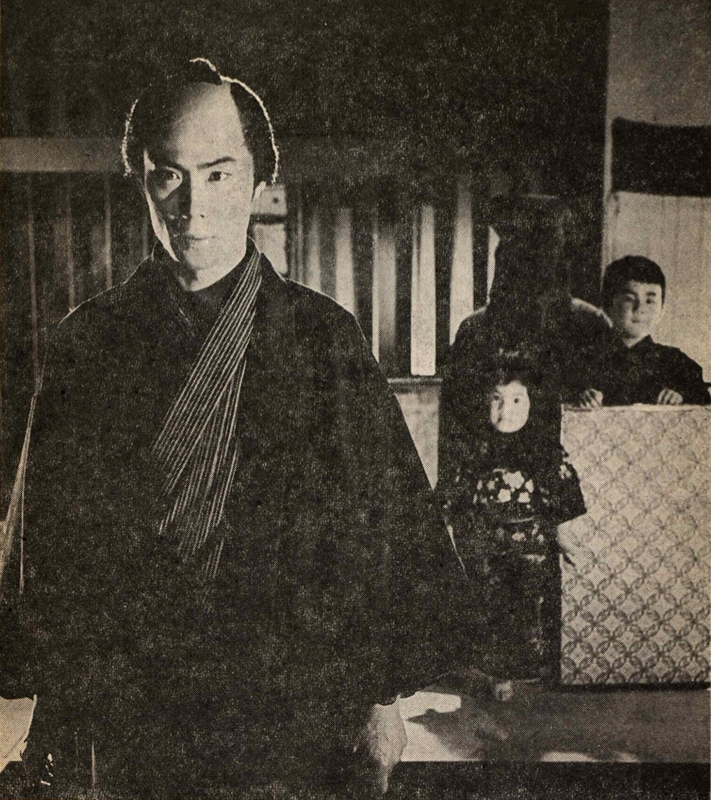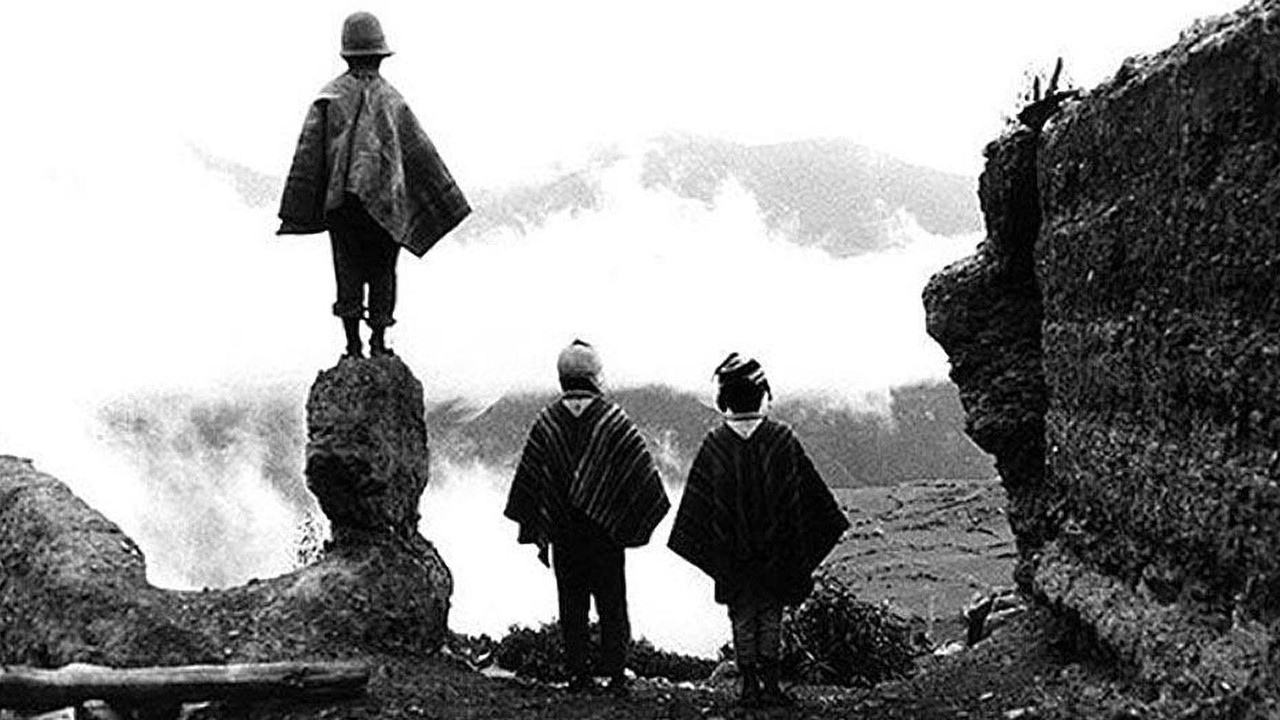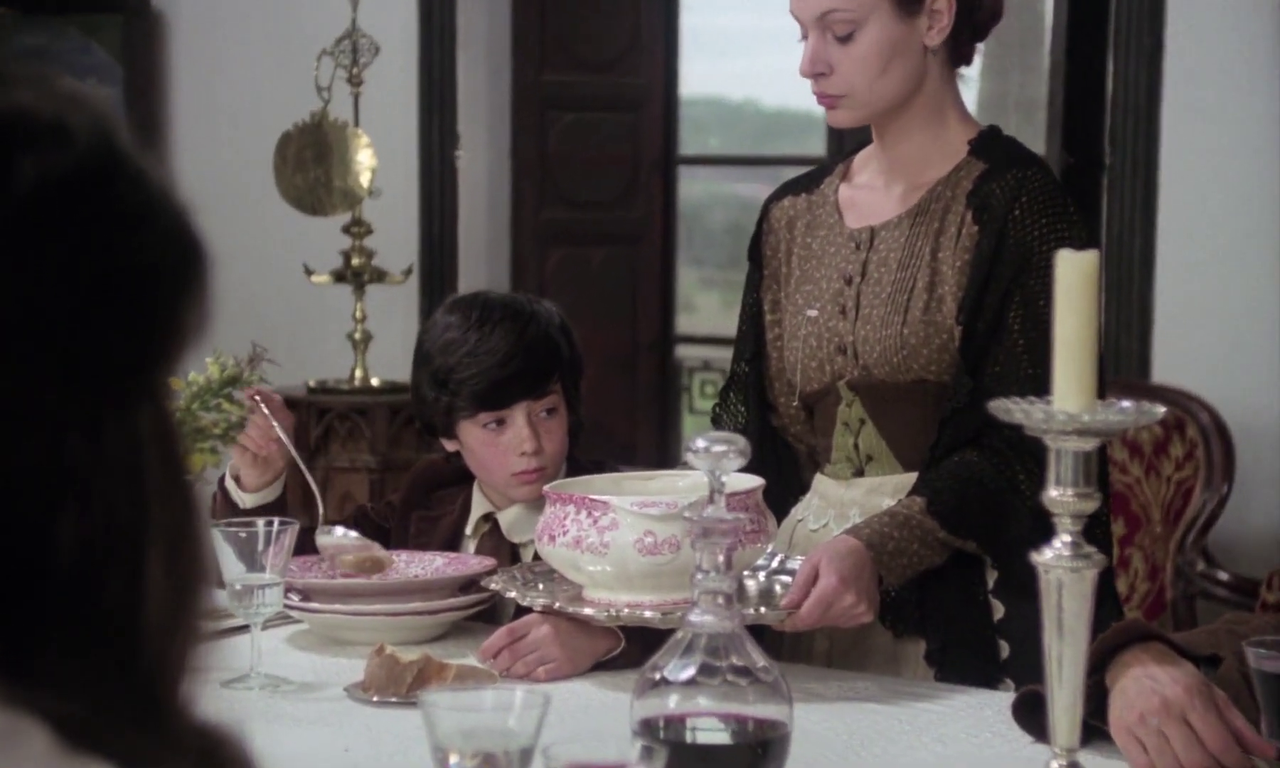“I'm a volcano of ideas.”I pugni in tasca [Fists in the Pocket] (Marco Bellocchio, 1965)
Oct
15
soup

A smirking Alessandro (Lou Castel) pours soup with a ladle with his tired-looking mother (Liliana Gerace) observing. DP: Alberto Marrama.
– Alessandro
心中天網島 [Shinjū: Ten no Amijima / Double Suicide] (Masahiro Shinoda, 1969)
Oct
10
International Stage Management Day

Jihei (Kichiemon Nakamura ) and his children with a stagehand visible between them. DP: Tōichirō Narushima.
心中天網島 is based on a 1721 文楽 [#bunraku] puppet theatre play]. As traditional in this style of theatre, the puppeteers are in full view of the audience wearing all-black cloaks. 心中天網島 does the same, but substitutes the puppets with flesh and blood actors.
The puppeteers are 黒衣 [kuroko, litt. “black clad”, though there are colour variations depending on the scene's requirements], guiding the performers towards their destiny.
Yawar Mallku [Blood of the Condor] (Jorge Sanjinés, 1969)
Oct
9
Indigenous Peoples Day

Three Quechua men in ponchos and chullas seen from the back look out over the Anti (Andes). One of them stands on top of a large boulder. DP: Antonio Eguino.
Almacita di desolato [Almacita, Soul of Desolato] (Felix de Rooy, 1986)
Oct
5
National Caribbean Civility Day

Desolato's village priestess Solem (Marian Rolle). DP: Ernest R. Dickerson.
Beatriz (Gonzalo Suárez, 1976)
Oct
5
soup

Basilisa (Nadiuska) holds up a terrine for Juan (Óscar Martín), who scoops the soup into his bowl. The bowl is the top of three the small boy has towering in front of him. DP: Carlos Suárez.
“Bet you can't eat just one.”Dutchman (Anthony Harvey, 1966)
Oct
3
Mean Girls Day

Clay (Al Freeman Jr.) reading a newspaper and minding his business on a subway train home. Just arrived on his car is Lula (Shirley Knight) and her endless supply of apples. DP: Gerry Turpin.
The haunting retelling (beware of spoilers) of #Wagner's The Flying Dutchman.
– advertising slogan
Morire gratis (Sandro Franchina, 1968)
Oct
2
National Michelle Day

Michelle (Karen Blanguernon) and the artist (Franco Angeli). DP: Guido Cosulich.
“It was fear that created the first gods.”Привързаният балон [Privarzaniyat balon / The Tied-Up Balloon] (Binka Zhelyazkova, 1967)
Oct
1
Balloons Around The World Day

The balloon sails along as a young woman in white (Janet Miteva) walks with it. DP: Emil Vagenshtain.
One day, a large blimp shows up over a small Bulgarian village. The townspeople, seeing the prosperity in all that beautiful silk and then some, go after it.
– Stratius
The Animal (Walter Ungerer, 1976)
Sep
30
National Ghost Hunting Day

Jo (Jo Moore) in the couple's cabin. She's seen reflected in a mirror, together with what appears to be an older woman in an old photograph. DP: Walter Ungerer.
“Information is like a bank. Some of us are rich. Some of us are poor, with information. All of us can be rich. Our job, your job, is to rob the bank. To kill the guard. To go out there to destroy everybody who keeps, and hides, the whole information. Simple. Special. Information. Power.”Decoder (Muscha, 1984)
Sep
28
International Right To Know Day

In a crumbling bunker, the High Priest (Genesis P-Orridge) lectures about information. DP: Johanna Heer.
– The High Priest